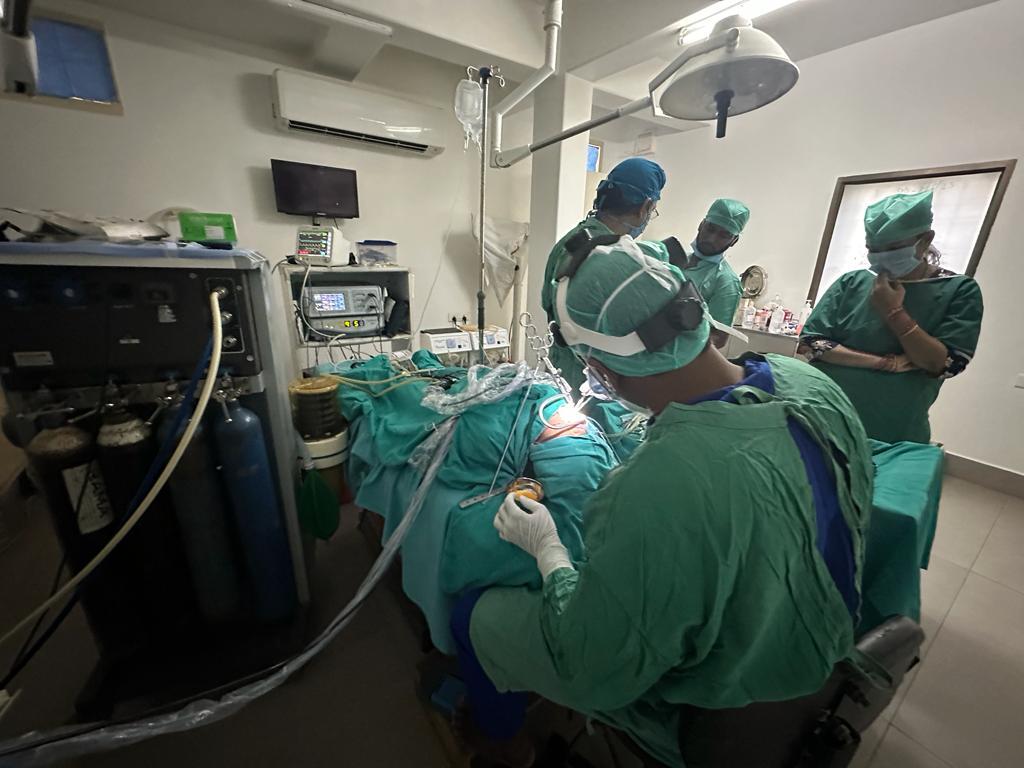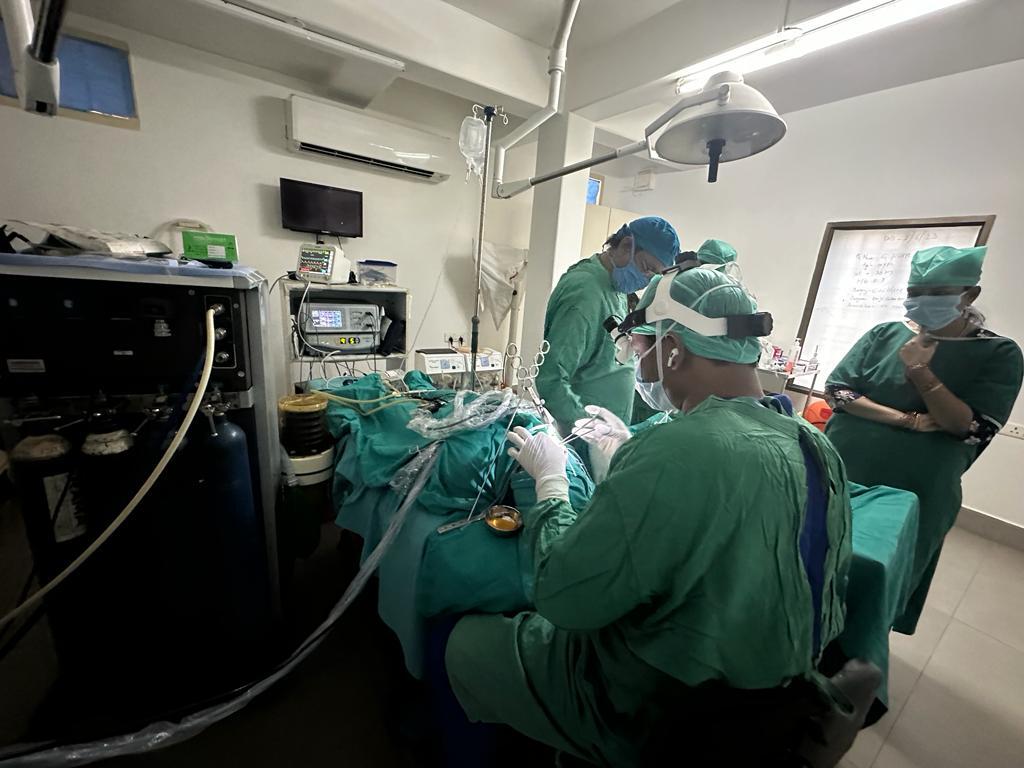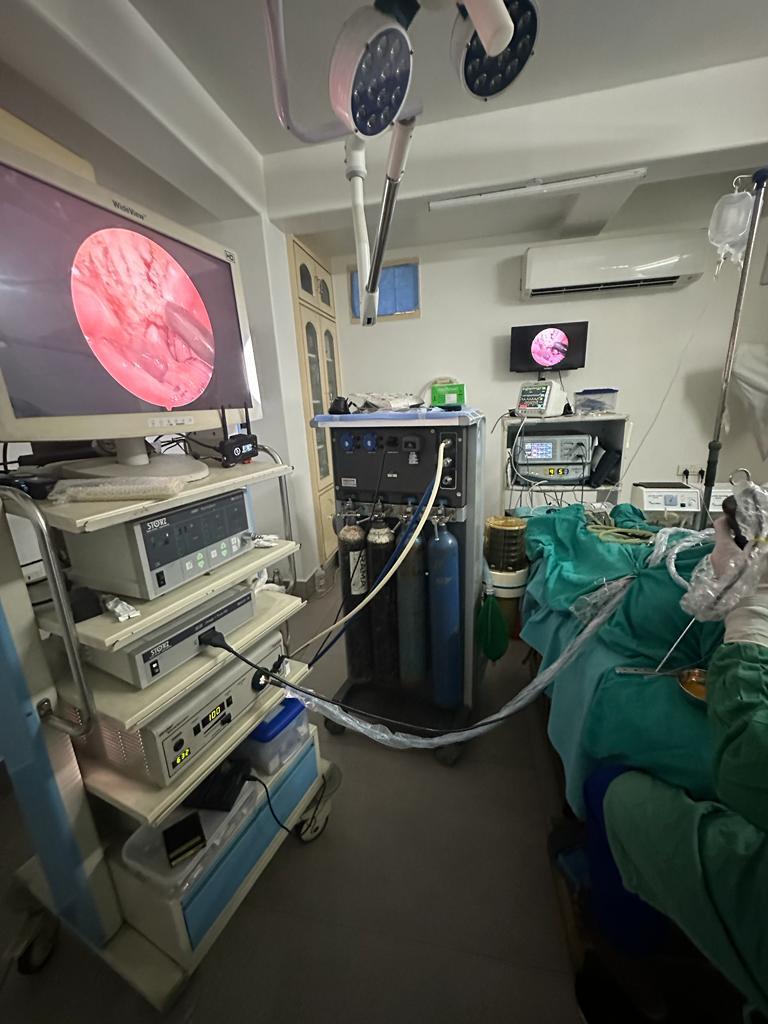ENT: Day 3

Today, I went back to the OT to observe a tonsillectomy and adenoid removal! The nurses used a metal stand to keep the patient in the optimal position for surgery. There were various tubes put in the patients nostrils as well as their throat so that they could receive airflow despite the surgical area being in their throat and nose.
Dr. Rayudu cut out the tonsils and cauterized any vessels causing excessive blood flow. Next, he used a suction-like tool to remove tissue from the patient's adenoids which are in the nasopharyngeal area. This was a tedious process of cutting, suctioning, and cauterizing until all of the obstructing tissue was removed.

*Dr. Rayudu cutting out the patient's tonsils.

*View of adenoid removal from the scope's camera.
The picture above actually shows the gas tanks containing the gas the anesthesiologist administered to the patient before undergoing surgery. For example, the gas in the blue tank furthest to the right is nitric oxide, a muscle relaxer.
I ended my last day at Dr. Rayudu's hospital with observing more regular outpatient cases. There were actually many instances where people would drive long distances for medical aid. Sophisticated hospitals are not found everywhere here, so people living in more rural areas often drive to bigger cities and get their health-related affairs in order in one or two days.